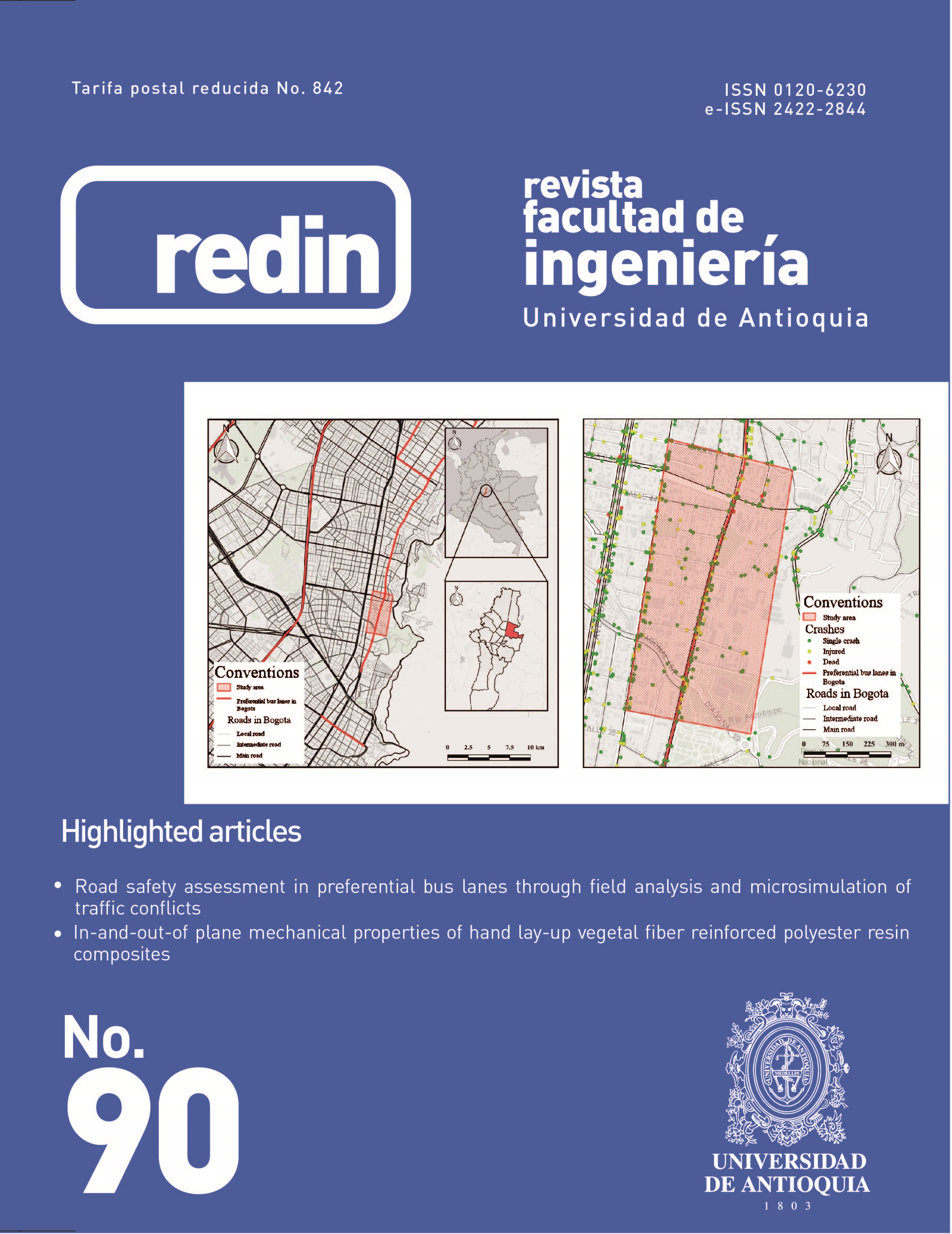El método del alpinista para detección de picos en señales fotopletismográficas
DOI:
https://doi.org/10.17533/udea.redin.n90a06Palabras clave:
fotopletismografía, detección de picos, señales de baja amplitud, contaminación por ruido, umbral adaptativoResumen
Se han llevado a cabo numerosos esfuerzos por desarrollar algoritmos para la detección de picos en señales fotopletismográficas (PPG). La mayoría de estos algoritmos han sido concebidos específicamente para funcionar frente a los artefactos ocasionados por movimiento y a la desviación en la línea de base. Sin embargo, poco se ha hecho con respecto a la detección de picos en señales PPG de baja amplitud. En un intento por abordar este problema, se propuso un algoritmo para detectar, en tiempo real, los picos de las señales PPG. En comparación con otros dos algoritmos de detección de picos bien establecidos, el método propuesto fue capaz de alcanzar más del 98% de sensibilidad y menos del 3% de tasa de detección fallida, incluso cuando la amplitud de la señal PPG se redujo a 0,2 V. Aún así, es necesario mejorar su robustez ante los artefactos por movimiento.
Descargas
Citas
J. Allen, “Photoplethysmography and its application in clinical physiological measurement,” Physiological Measurement, vol. 28, no. 3, pp. R1–39, Feb. 2007.
R. Colombo and et al., “Pulse photoplethysmographic analysis estimates the sympathetic activity directed to heart and vessels,” Anesthesiology, vol. 123, no. 2, pp. 336–345, Aug. 2015.
M. Elgendi, “On the analysis of fingertip photoplethysmogram signals,” Current Cardiology Reviews, vol. 8, no. 1, pp. 14––25, Feb. 2012.
K. Hamunen and et al., “Effect of pain on autonomic nervous system indices derived from photoplethysmography in healthy volunteers,” British Journal of Anaesthesia, vol. 108, no. 5, pp. 838–844, May 2012.
W. J. Jiang, P. Wittek, L. Zhao, and S. C. Gao, “Adaptive thresholding with inverted triangular area for real-time detection of the heart rate from photoplethysmogram traces on a smartphone,” in 36th Annual International Conference of the IEEE Engineering in Medicine and Biology Society (EMBC), Chicago, IL, 2014, pp. 3212–3215.
W. Karlen, J. M. Ansermino, and G. Dumont, “Adaptive pulse segmentation and artifact detection in photoplethysmography for mobile applications,” in 34th Annual International Conference of the IEEE Engineering in Medicine and Biology Society (EMBC), San Diego, CA, 2012, pp. 3131–3134.
Z. Marcinkevics, S. Kusnere, J. I. Aivars, U. Rubins, and A. H. Zehtabi, “The shape and dimensions of photoplethysmographic pulse waves: a measurement repeatability study,” Acta Universitatics Latviensis Biology, vol. 753, pp. 99–106, 2009.
R. C. Peng, X. L. Zhou, W. H. Lin, and Y. T. Zhang, “Extraction of heart rate variability from smartphone photoplethysmograms,” Computational and Mathematical Methods in Medicine, vol. 1, pp. 1–11, 2015.
K. H. Shelley, “Photoplethysmography: beyond the calculation of arterial oxygen saturation and heart rate,” Anesthesia & Analgesia, vol. 105, no. 6, pp. S31––S36, Dec. 2007.
H. S. Shin, C. Lee, and M. Lee, “Adaptive threshold method for the peak detection of photoplethysmographic waveform,” Computers in Biology and Medicine, vol. 39, no. 12, pp. 1145–1152, Dec. 2009.
T. V. Tran and W. Y. Chung, “A robust algorithm for real-time peak detection of photoplethysmograms using a personal computer mouse,” IEEE Sensors Journal, vol. 15, no. 8, pp. 4651–4659, Aug. 2015.
T. V. Tran and W. Y. Chung, “A robust peak detection algorithm for photoplethysmographic waveforms in mobile devices,” Journal of Medical Imaging and Health Informatics, vol. 7, no. 7, pp. 1617–1623, Nov. 2017.
D. Žikić, “An improved reflective photoplethysmograph probe design for detection of an arterial blood flow,” Journal of Medical Engineering & Technology, vol. 32, no. 1, pp. 23–29, Jan. 2008.
Descargas
Publicado
Cómo citar
Número
Sección
Licencia
Derechos de autor 2019 Revista Facultad de Ingeniería Universidad de Antioquia

Esta obra está bajo una licencia internacional Creative Commons Atribución-NoComercial-CompartirIgual 4.0.
Los artículos disponibles en la Revista Facultad de Ingeniería, Universidad de Antioquia están bajo la licencia Creative Commons Attribution BY-NC-SA 4.0.
Eres libre de:
Compartir — copiar y redistribuir el material en cualquier medio o formato
Adaptar : remezclar, transformar y construir sobre el material.
Bajo los siguientes términos:
Reconocimiento : debe otorgar el crédito correspondiente , proporcionar un enlace a la licencia e indicar si se realizaron cambios . Puede hacerlo de cualquier manera razonable, pero no de ninguna manera que sugiera que el licenciante lo respalda a usted o su uso.
No comercial : no puede utilizar el material con fines comerciales .
Compartir igual : si remezcla, transforma o construye a partir del material, debe distribuir sus contribuciones bajo la misma licencia que el original.
El material publicado por la revista puede ser distribuido, copiado y exhibido por terceros si se dan los respectivos créditos a la revista, sin ningún costo. No se puede obtener ningún beneficio comercial y las obras derivadas tienen que estar bajo los mismos términos de licencia que el trabajo original.










 Twitter
Twitter